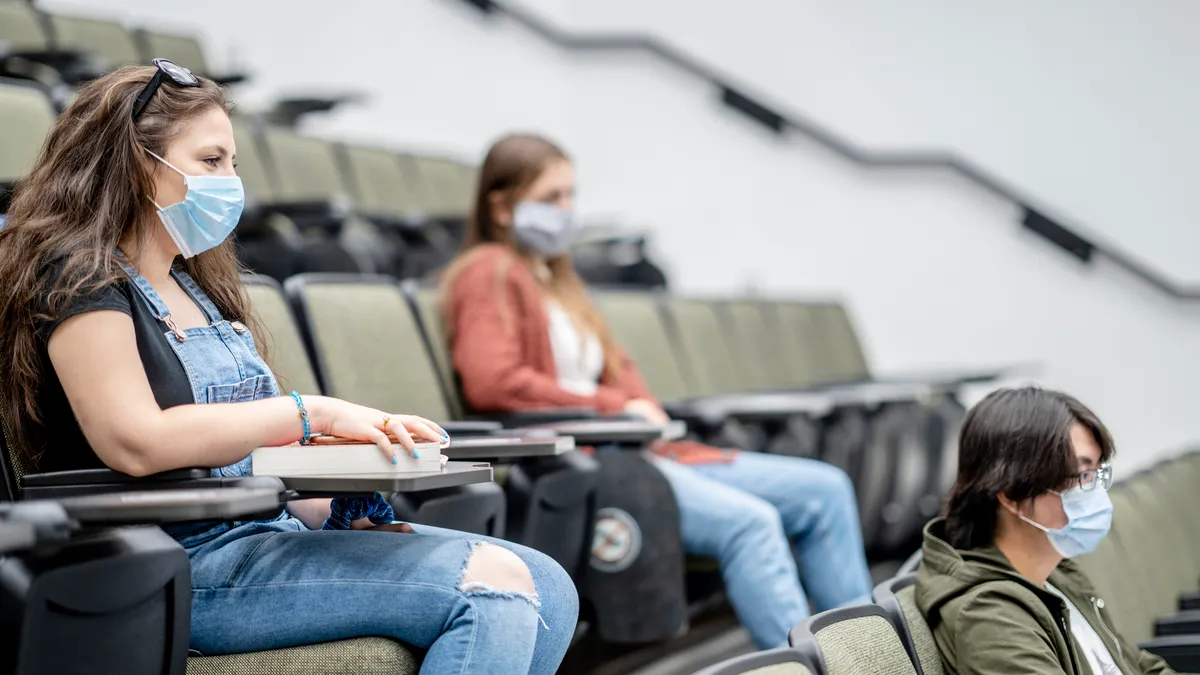Dive Brief:
- U.S. colleges face a “new normal” and accelerated existing challenges in the wake of the COVID-19 pandemic, including constrained operations and heavy competition, a recent report from S&P Global Ratings found.
- Between 2018 and 2023, operating margin rates fell from 0.8% to -0.1% amid rising costs to colleges, according to S&P. Meanwhile, median tuition discount rates at private colleges rose by more than 5 percentage points, to 44.4%, in that period, putting pressure on college revenues.
- From 2019 through the second quarter of 2024, the ratings agency issued 126 credit downgrades for the higher ed sector, compared to 62 upgrades, per the report.
Dive Insight:
“In 2020, the pandemic turned up the heat on the low-burning fires already stressing the higher education sector,” S&P analysts said in the report.
That includes long-expected demographic pressures, as the population of traditional-age students declines, leaving the sector to fight over fewer prospects.
Competition often takes the form of pricing. Although sticker prices continue to climb, institutions often steeply discount with financial aid, both reducing their revenue and complicating the conversation around the value of college.
In a report earlier this year, the National Association of College and University Business Officers found that net tuition revenue per first-time undergraduate, when adjusted for inflation, fell six years out of 10 between the 2013-14 and 2022-23 academic years. The 2021-22 academic year saw the largest drop, with a 5.4% decline.
At the same time, costs have spiked. In 2022, inflation in college operations hit its highest level in more than a decade, according to the Commonfund Institute’s Higher Education Price Index.
Those higher costs have narrowed “the fine line schools walk between keeping the cost of attendance low enough to attract students and still covering their own rising costs,” S&P analysts said.
Institutions have tried to check rising costs through faculty and program cuts, which continue today, they noted.
“However, universities require balance here, given the potential for cascading impacts if salaries and benefits are reduced to an extent sufficient to cause faculty strikes,” the analysts wrote, pointing to a 49-day adjunct faculty strike at Columbia College Chicago.
On top of those structural challenges exacerbated by the pandemic, the advent of COVID-19 created its own unique pressure for institutions, the ripple effects of which can still be felt in some places.
S&P analysts pointed to the temporary shuttering of campuses; students putting off enrollment; hiring, pension and salary freezes; declines in international student enrollment amid COVID-19 travel restrictions; and the added financial strain of higher interest rates.
Today, the analysts noted, the impacts can still be seen in smaller first-year class sizes that will take additional years to graduate, as well as sizable investments in mental health and tutoring services for students deeply affected by the pandemic.














